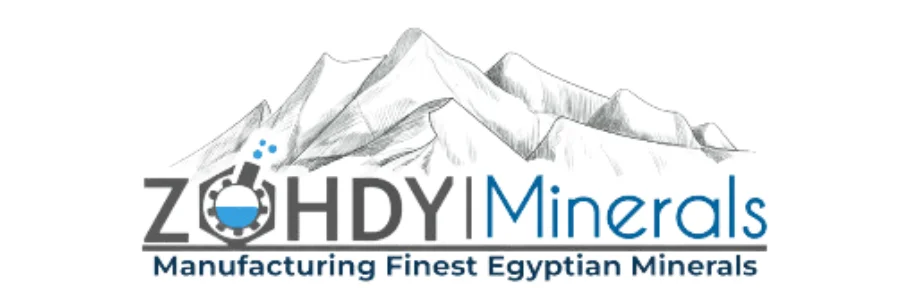Calcium Carbonate is a white, non-toxic, tasteless, and non-irritating powder. It is considered one of the most widely used inorganic fillers. Calcium Carbonate is neutral, insoluble in water, but soluble in acids. Depending on the method of production, Calcium Carbonate can be classified into heavy Calcium Carbonate, light Calcium Carbonate, colloidal Calcium Carbonate, and crystalline Calcium Carbonate.
Calcium Carbonate is widely distributed in nature; it can be found in rocks such as aragonite, calcite, chalk, limestone, and marble. It is also an essential component of animal bones and shells. Due to its versatility and cost-effectiveness, Calcium Carbonate is used in many industries.
One of its key uses is in paint manufacturing, where adding Calcium Carbonate helps keep relatively dense lithopone suspended without settling at the bottom.
What is paint ?
Paint (or coating) is a viscous liquid compound used to cover surfaces with a thin layer after it solidifies. It consists of a mixture of insoluble materials suspended in an oily medium or in a water-based emulsion. The liquid medium of paint may be organic or inorganic materials, which, when exposed to air, undergo polymerization, oxidation, or drying reactions to form a solid layer (called the coating). This coating adheres strongly to the painted surface.
Types of Paints
Paints are one of the most important steps in building and finishing houses and buildings. Choosing the right type and color of paint is essential to match room sizes and furniture styles.
Wall painting plays a major role in transforming the décor of your home, as it creates a smooth finish that covers wall and ceiling imperfections while improving appearance. Many materials are now available for wall decoration designs.
The most common paint types include:
• Water-based Paints
These paints are known for their ease of use compared to other types. They are resistant to mold, easy to clean, quick to dry, resistant to cracking, and retain color over time. However, they lack the velvety or glossy texture, cannot be used on metallic or plastic surfaces due to high surface tension with water, and have a shorter lifespan compared to oil-based paints.
Calcium Carbonate is usually added in ratios between 20%–60% in water-based paints to prevent pigment sedimentation, enhance dispersion, improve gloss, and increase coating durability.
• Oil-based Paints
As the name suggests, their liquid medium is fatty oil, partly unsaturated. Oil-based paints have several advantages: glossiness, rich colors, and high resistance to humidity, making them suitable for kitchens and bathrooms. They can be applied to almost all surfaces and are easily modifiable before drying since they require longer drying times.
However, they also have drawbacks: they are harder to clean, release harmful fumes containing organic compounds, and are generally less eco-friendly.
Benefits of Using Calcium Carbonate in Paint
-
Enhances brightness and whiteness of paint without reducing coverage or adhesion.
-
Improves color intensity, gloss, coverage ability, corrosion resistance, adhesion strength, shock resistance, and flexibility.
-
Extensively used at high levels (up to 60%) in skim coats, plaster powders, and putties as a filler and whitening agent.
-
Acts as an extender, gloss control agent, titanium dioxide spacer, rheology modifier, and thickener in paint formulations.
-
Provides viscosity for better paint application and helps absorb and reflect light (especially harmful UV rays), protecting the dried polymer film.
-
Reduces production costs and increases paint effectiveness.
Functions of Calcium Carbonate in Paint
-
Filler
Lowers production costs without compromising quality.
-
Property Enhancer
Improves viscosity, coverage, and resistance to abrasion.
-
Whitening Agent
Increases brightness and opacity of paint.
Types of Calcium Carbonate Used in Paint
-
Ground Calcium Carbonate (GCC)
The most common type, offering good value for cost.
-
Precipitated Calcium Carbonate (PCC)
Has smaller particle size and higher purity, improving paint performance.
-
Ultra-fine Calcium Carbonate
Even smaller particle size than PCC, providing superior results in certain paint types.
Effects of Calcium Carbonate on Paint Properties
-
Viscosity
Increases thickness for better application control.
-
Gloss
Reduces excessive shine.
-
Coverage
Enhances hiding power.
-
Durability
Improves resistance to abrasion and wear.
Criteria for Selecting Calcium Carbonate for Paint:
-
Particle Size
Must suit the paint type.
-
Color
Should be pure white.
-
Purity
Must be free from impurities.
Other Applications of Calcium Carbonate in Coatings
-
Putty Manufacturing
Used as filler.
-
Varnish Production
Improves texture and consistency.
-
Primers & Base Coats
Acts as a filler to enhance coverage and reduce cost.






